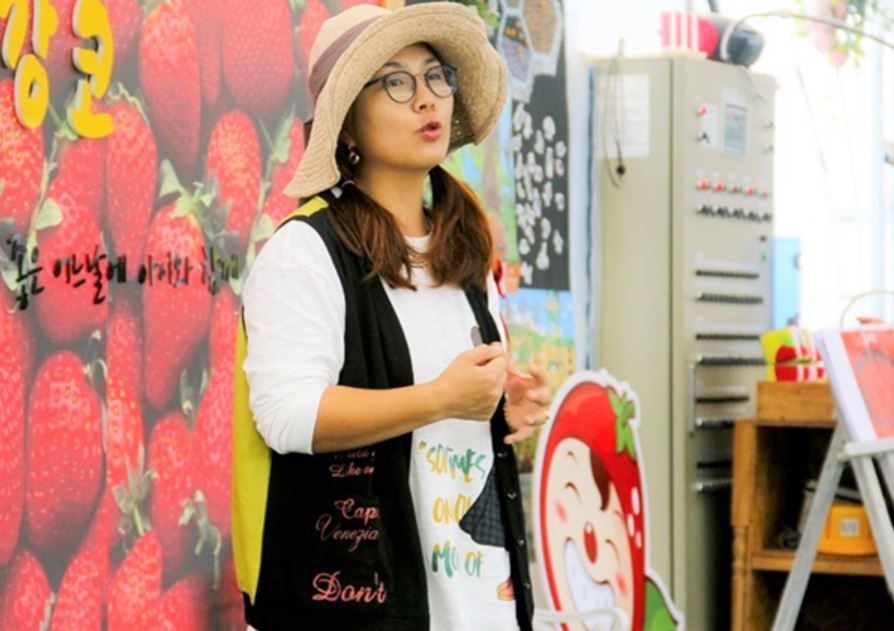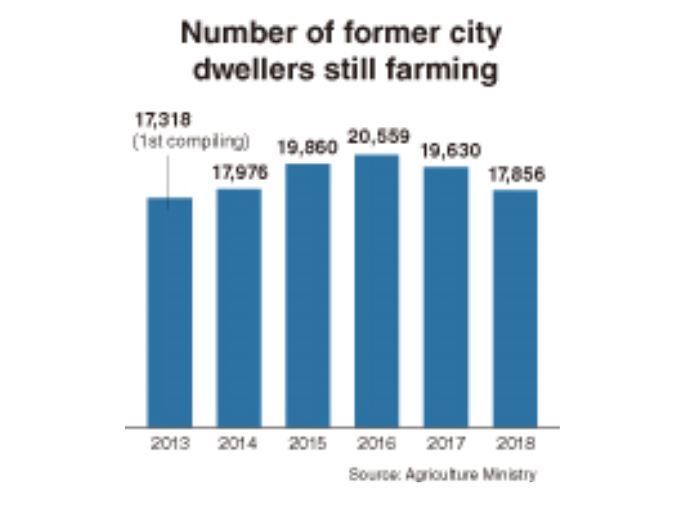[News Focus] Transition to farming loses luster for city dwellers
Population of 'return to farm work' falls to 5-year low
By Kim Yon-sePublished : July 4, 2019 - 16:43
SEJONG -- Over the past decade, a growing number of urbanites in South Korea have moved to rural areas to tap the agriculture industry, helped on their way by various government-led benefits for new farming households.
A large proportion of them were in their 40s, 30s and 20s, and quit salaried jobs in big cities to take up farming.
But the situation has changed. Many of them have failed to accommodate themselves to the rural life and farm work.
Among their troubles are difficulty getting along with their new neighbors, a lack of know-how in cultivating fields, and financial difficulties due to the lower incomes rural life affords.
Data from the Ministry of Agriculture, Food and Rural Affairs suggested the desire to move to rural districts has been on the wane among city folk.
A large proportion of them were in their 40s, 30s and 20s, and quit salaried jobs in big cities to take up farming.
But the situation has changed. Many of them have failed to accommodate themselves to the rural life and farm work.
Among their troubles are difficulty getting along with their new neighbors, a lack of know-how in cultivating fields, and financial difficulties due to the lower incomes rural life affords.
Data from the Ministry of Agriculture, Food and Rural Affairs suggested the desire to move to rural districts has been on the wane among city folk.

The number of people who were still in continuous farm work after moving from the city to work in agriculture stood at 17,856 (including household members) as of 2018, down 9.0 percent from 19,630 a year earlier.
It was the second consecutive year of decline, the population having peaked at 20,559 in 2016.
Furthermore, the 2018 figure was the lowest in five years since the government started officially recording the data in 2013, when it was at 17,318. It marked 17,976 in 2014 and 19,860 in 2015.
In addition, the number of those who have relocated from cities to the countryside to “enjoy rural life, irrespective of work” also dropped on-year by 4.9 percent from 497,178 in 2017 to 472,474 in 2018. They include residents who engage in service or retail businesses or do not engage in any economic activities after moving to countryside.
An official of the Agriculture Ministry downplayed last year’s decrease, saying that it expected the decline to be temporary “as the number of people returning to farming had rapidly grown during past years.”
Nonetheless, some analysts say that many young farmers are thought to have been frustrated by weak infrastructure in rural life and suffered problems with their harvests for a long period.
Data showed that the average age for those moving to rural districts was 41.2 as of 2018. Notably, those in their 20s or under topped the list with portion of 26.5 percent, followed by those in their 30s with 23.5 percent.
“Research data showed that a certain portion of young urbanites, who had chosen the agricultural life, have made a U-turn to cities,” said analyst in Seoul. “There is a need for the government to look into problems, caused from their blind support policies only to make up for shortage in farm workforce.”

While the central and local governments provide those taking up farming with a variety of support, they glossed over improvement of rural infrastructure, which lags behind cities in terms of transportation, education and medical services, he said.
Despite an active rush to countryside life since 2010, the number of collective farm population (including those born into farm households) stood at 2.31 million as of 2018, which is a decline of about 750,000 over the past eight years.
With regards to the decrease, an official from Statistics Korea said those whose farms were below a certain size were not included in the demographic calculation.
The official was quoted by a news outlet as saying that “the demographic standard for the farm-household population is based on the cultivation on the fields 1,000 square meters or more and the sales records for their products at least worth 1.2 million won ($1,020) per annum.”
His remarks suggest households of only one or two members cultivating small fields have taken up a large portion of those returning or turning to rural areas, and therefore don’t show up on official statistics.
According to data from Statistics Korea, single-member households took up 68.9 percent of the still-engaged “return to farm” households, as of 2018.
By Kim Yon-se (kys@heraldcorp.com)









![[Kim Seong-kon] Democracy and the future of South Korea](http://res.heraldm.com/phpwas/restmb_idxmake.php?idx=644&simg=/content/image/2024/04/16/20240416050802_0.jpg&u=)







![[KH Explains] Hyundai's full hybrid edge to pay off amid slow transition to pure EVs](http://res.heraldm.com/phpwas/restmb_idxmake.php?idx=652&simg=/content/image/2024/04/18/20240418050645_0.jpg&u=20240418181020)

![[Today’s K-pop] Zico drops snippet of collaboration with Jennie](http://res.heraldm.com/phpwas/restmb_idxmake.php?idx=642&simg=/content/image/2024/04/18/20240418050702_0.jpg&u=)